Nightingale is pretty fantasy survival with a BioWare pedigree, but it takes a while to sing
It pixie up.
Palworld has its Pokémon (of the legally distinct variety); Ark has its dinosaurs; Enshrouded is like a third-person action-adventure in a survival game skin; Conan is Conan; Valheim immediately taps into the Viking fantasy; but even after eight or so hours with Inflexion Games' upcoming survival and crafting adventure Nightingale, it's not so easy to define its thing.
But let's start with the fae; in Nightingale, Inflexion – a studio founded by former BioWare bigwig Aaryn Flynn - has conjured up an alternative history of magic and Victoriana that's at least partially indebted to Susanna Clarke's sprawling novel Jonathan Strange & Mr Norrell. Magic in Nightingale's version of Victorian-era Earth is, thanks to humanity's early brush with the fae, both real and commonplace, and Nightingale - the pioneering city of magical research and portal travel that gives the game its name - was the pride of mankind until calamity struck and the world was engulfed in a deadly miasma. Some attempted to escape through Nightingale's portals, but when the network collapsed, they were catapulted into distant fae realms – and you as a player count yourself in this unlucky group known as Realmwalkers – forced to fend for themselves in hostile climes as they seek a way home.
It’s an enticing premise, the kind of gentler gaslight fantasy that video games often overlook in favour of its dirtier, grungier steampunk twin. It’s also a premise that Nightingale, in its opening hours at least, struggles to capitalise on; beyond a slightly off-putting version of A Midsummer Night's Dream's Puck, here a little too fond of turgid purple prose, and some striking vistas festooned with fantasy bric-a-brac – an upended galleon here, a gravity defying obelisk there - there's little that clearly defines Nightingale's vision early on, and little about its survival and crafting that immediately sets it apart from countless other similarly styled games. Not that there's anything wrong with its survival fundamentals; Nightingale's familiar early rhythms of tree punching and shack building, if not especially boundary pushing, are fine – there are even glimmers of some interesting twists, including a slightly strategic building system where placement of items determines their efficiency - and I spent its first few hours merrily picking berries, terrorising deer for their pelts and meat, and having a perfectly pleasant time.
Even by Inflexion's own admission, Nightingale's early game is pretty traditional survival fare, and – based on my eight hours or so with a preview build – it’s a slow burn of a game, taking a while to find its footing and establish a hook of its own. That hook, when it eventually comes, is Nightingale's infinite procedurally generated worlds, with players – either adventuring solo or in co-op parties of up to six – able to leap back and forth between what the game calls realms, conjured into existence on the fly through player-determined combinations of cards.
Here, a primary card determines the biome that'll serve as the foundation for each new world – woodland, desert, and swamp, each with their own distinct hazards, being the three core biomes available at start of Nightingale's early access - while a secondary card influences the specifics: the creatures, colours, and resources within. It's also possible to play a third card at special Transmuters found inside each realm, these serving as real-time modifiers that might, say, suddenly drench the world in ceaseless rain, or reduce its gravity, or summon an endless night where powerful beasts prowl. The idea seems to be these tailored worlds feed back into Nightingale's overall survival and crafting loop by providing an increased opportunity of finding specific resources, encouraging reasons to spin up a new one and continue to explore.

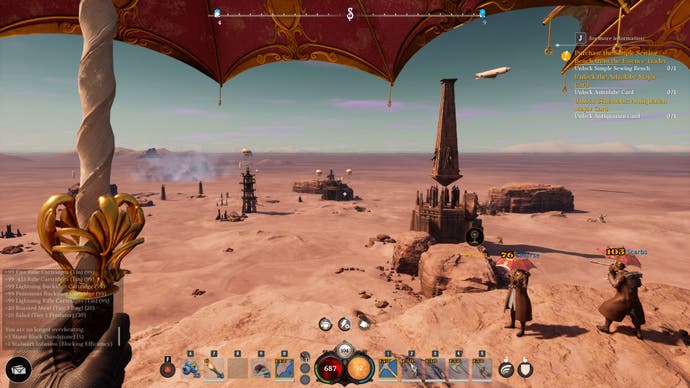

And Nightingale's procedural generation makes a positive first impression; its worlds are genuinely beautiful – delicately hued expanses of undulating hills, arid deserts, or fetid marshlands peppered with mysterious landmarks, caves, dungeons, and coyly hidden treasures that feel wonderfully organic - and that, initially at least, are a thrill to explore. Your first brush with Nightingale's procedural generation comes early on, when you're deposited in a unique "home" realm based on the biome of your own choosing, a comparatively safe open-world landscape where you're able to establish a base and get to grips with its survival core. In my case, having opted for 'forest', I got a soft-focus fantasy sprawl of misty glens, sun-dappled woodland, and foaming surf lapping gently against sandy shores – Nightingale's early survival play might be overly familiar, but you certainly couldn't ask for nicer scenery to do it in.
If there's a concern, it's that even after a relatively brief time with Nightingale, its procedural generation – or at least this early access version - soon starts to show its limitations, one biome variant looking pretty much like the last, a colour palette shift to, say, purple or an alternative pool of wildlife aside. It’s hard not to wonder if its procedurally assembled puzzles and dungeons might quickly succumb to the same kind of repetition too - and if its procedurally crafted landscapes will provide an interesting enough backdrop for its survival, and for long enough, to adequately replace the charm and soul of a hand-crafted world.
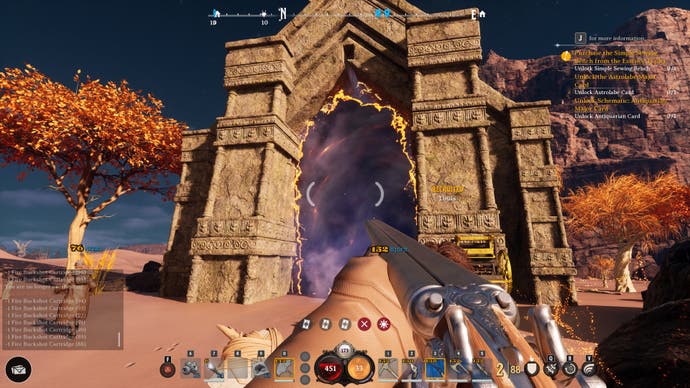
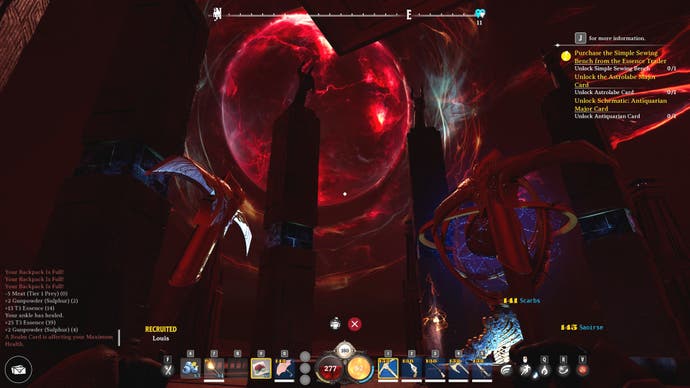
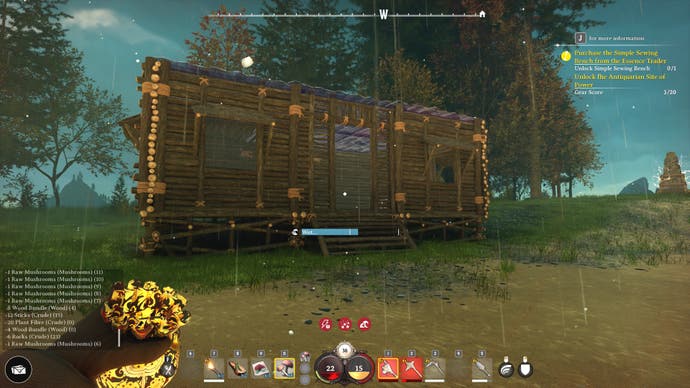
All of which perhaps sounds a little down on Nightingale. But despite some initial reservations, there's strong suggestion it'll blossom into something far more interesting as it transitions from its atmospheric, if rather unremarkable, early survival and crafting loop, into what appears to be a richer, more complex mid-game. I had the opportunity to briefly explore Nightingale's later stages as part of a separate two-hour developer-guided play session, and while the introduction to its more elaborate systems was a little overwhelming, it was intriguing too. There are (I think) elemental infusions for clothing and weapons, spells, charms, and more. And the rudimentary shack building of the early game eventually makes way for more intricate construction, where players can fashion some wonderfully grand Estates (as Nightingale's bases are known) – in styles ranging from classic Victoriana to era-appropriate Far Eastern architecture - that can even be populated by the odd-jobbing NPCs you befriend along the way.
And here's the thing; the more I got to play around with Nightingale's more exotic mid-game tools, the more its delightfully refreshing anything-goes personality began to come into focus, its slightly bland early hours making way for a game not afraid to embrace the ludicrous, chaotic potential of its fantastical conceit. Our mid-game adventure took us first into a desert realm, where our group – sporting a marvellously haphazard array of fashion, one-part Victorian gentry, one-part scruffy street urchin - gallivanted around like giddy schoolchildren, finally liberated from Nightingale's initial survival drudgery with all sorts of wonderful new toys.
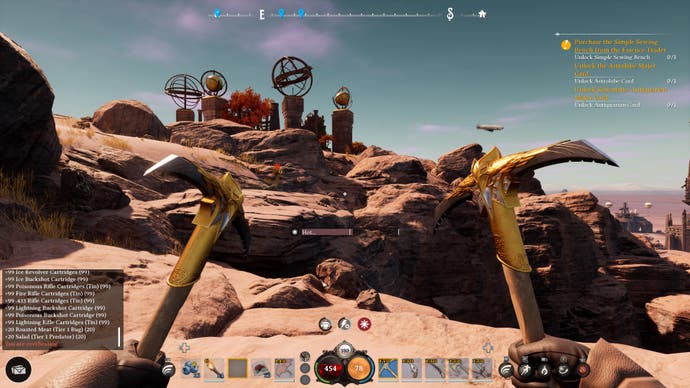
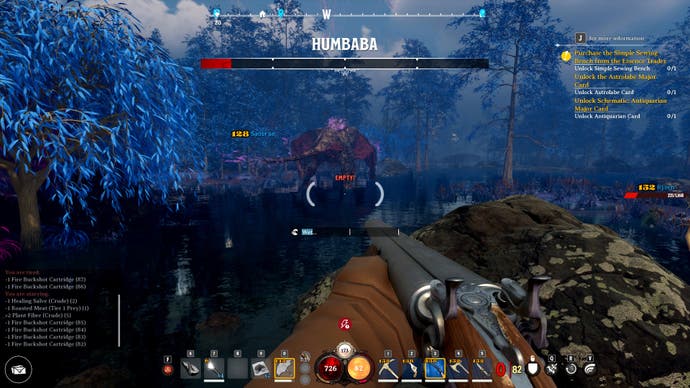

We tumbled into the darkness of gloomy tombs, pistols twitching, shimmied up towering mesas with climbing picks in hand, unleashed carnage on the local wildlife with elementally infused shotguns, and drifted gaily through the air in the deadly afternoon sun with parasols held aloft, like a ragtag band of murderous Mary Poppinses. Here, after a long, slow start, it finally felt like Nightingale had found its own rhythm, particularly toward the end of our session when – now knee-deep in roiling purple swamp water – our adventure reached its climax in a blaze of flashy spells, magic-infused blades, bullets, and heavy artillery as we chased down a humongous apex creature, Monster Hunter style.
And after all that excitement, back in the relative peace of my own personal realm and with a clearer sense of how Nightingale might carve its own space in the busy survival genre, it was easier to look at it with more optimism. And re-energised, I raced through trees and gambolled over hills in the fading day, taking a few last screenshots of rotting shipwrecks and marble rotunda on distant hills. Here, in the shadow of something like an ancient Aztec temple, I spotted an NPC I'd overlooked before, a one-time New York news reporter, now also stranded far from home, with plenty of tales to tell. She spoke of her past and teased future adventures, weaving an immediately evocative spell - and perhaps it's here, in its subtle sense of character and in the romance of its world-building, that Nightingale might just find its most compelling sell. For all its early familiarity and not entirely convincing procedural showiness, there's undoubtedly real magic to Nightingale, even if it does take a while to cast its spell.




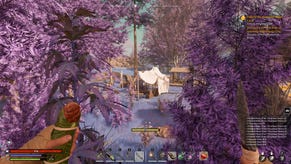


.png?width=291&height=164&fit=crop&quality=80&format=jpg&auto=webp)

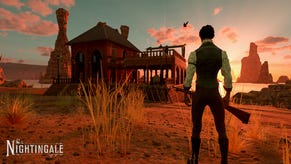
.png?width=291&height=164&fit=crop&quality=80&format=jpg&auto=webp)






